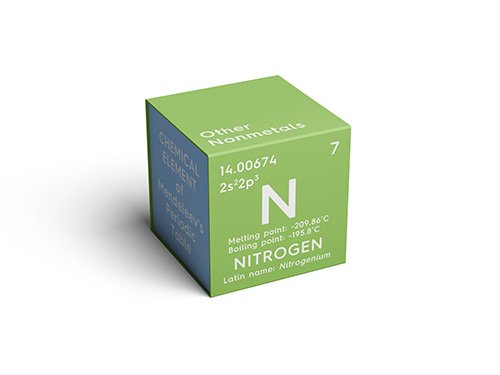
Nitrates
 OVERVIEW AND TREATMENT OPTIONS:
OVERVIEW AND TREATMENT OPTIONS:
Nitrates can occur naturally and synthetically originating from both agricultural, industrial, and waste treatment sources. Found primarily in inorganic fertilizers used on farms, nitrates are more than likely to be found in water supplies near areas of concentrated agricultural activity. They are used to make glass, as oxidizing agents for explosives, and to preserve colors in hot dogs and deli meats to maintain an aesthetic appeal. Nitrates are ions created when one nitrogen atom combines with 3 oxygen atoms (NO3). They occur naturally in plant life and is a key nutrient that plants need to grow being the reason they are found in fertilizers. They occur synthetically as industrial smoke or exhaust and automotive emissions creating fumes that would be hazardous to a person’s health.
SOURCES
Nitrates naturally occur in surface and groundwater. They are used primarily in fertilizers with higher concentrations and levels found in farming regions. Nitrates are highly leachable and will move with water within soil for long distances. Oxidation of nitrogenous waste found around septic tanks can be a major source of nitrates. This can lead to nitrates and nitrites leaching into the groundwater at extremely high concentrations. Poorly constructed wells can become susceptible to contamination from these high levels of nitrates. The risk increases if a shallow well or surface water is the main water supply. Floodwater leads to contamination also. Wells become vulnerable to nitrate contamination after flooding especially if submerged in floodwater for long periods of time.
TESTING
The only way to verify if you have nitrates in your drinking water is to test it. They are tasteless, odorless, and have no color making them undetectable through consumption. If the water source is located near sewage disposal plants or livestock facilities, the well water should be tested annually.
HEALTH CONCERNS
Nitrates can prove dangerous in high concentrations having even deadly health effects on pregnant women and newborns. Nitrates transform to nitrites in your digestive system. When nitrites get into your system they oxidize hemoglobin to form what is called methemoglobin, which cannot transport oxygen the same way hemoglobin can. When methemoglobin reaches a certain concentration in your blood it creates a condition known as methemoglobinemia or “blue baby syndrome”. A newborn cannot convert methemoglobin back to hemoglobin the way an adults enzymes can making them very susceptible to this condition. Symptoms will include the skin, lips, and nails starting to turn a blueish-grey color. Concentrations above 50% can prove fatal.
TREATMENT
Nitrates can be removed from drinking supplies by Reverse Osmosis, Ion Exchange, or Distillation.
REVERSE OSMOSIS are cost effective for point-of-use applications.
ION EXCHANGE for nitrates work by adsorbing the nitrate ion onto the resin bead. These anion resin beads are also attracted to sulfates which causes treatment approach issues when sulfate concentrates are high as well as the nitrates. A water softener will be put ahead of the nitrate unit to help it focus on the removal of the nitrates.
DIENTRY and DIUSE To remove solids from water via distillation is quite involved process, can only produce small amounts of water per day, and have higher operating cost than the previous mentioned approaches. BWS introduces Voltea to the residential market for point-of-entry and point-of-use applications to reduce nitrate levels in the drinking supply.

